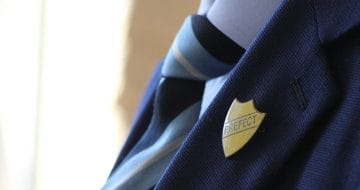Aspiring solicitor Ben Scott explores how name, image and likeness rights are reshaping US college sport

When American college athletes won the right in 2021 to profit from their name, image and likeness (NIL), the decision was hailed as a long-overdue correction to decades of financial imbalance. For years, the National Collegiate Athletic Association (NCAA) had prevented students from earning money despite universities generating billions through broadcasting, sponsorships and merchandising. But state legislation and NCAA policy changes opened the door to commercialising an athlete’s image rights.
The result has been nothing short of a revolution. According to ESPN, the top student-athletes now command seven-figure valuations, with Texas quarterback Arch Manning leading the way at $6.8 million. Some athletes have cashed in creatively on their names alone, like running back Bijan Robinson who marketed his own mustard brand, “Bijan Mustardson”. Others have signed with national giants like Nike, Adidas and T-Mobile.
But NIL is not simply about quirky advertising campaigns. It has exposed deep fault lines in the US college sports model and created a raft of legal questions that courts, regulators and universities are only beginning to grapple with.
State by state
Unlike professional leagues, which operate under centralised collective bargaining agreements, US college sport is fragmented. State laws differ dramatically, leaving universities to draft their own policies in the absence of legislation. Some states require schools to vet deals to prevent recruitment abuse, while others permit groups of wealthy alumni and donors far greater financial involvement in athlete deals.
This inconsistency has caused the NCAA headaches. It has warned that enforcing a uniform policy might breach antitrust law, since universities could be accused of colluding to restrict trade. The organisation has repeatedly called on Congress to pass federal legislation to create a national framework, but progress has been slow. Until that happens, NIL remains a patchwork regime where the rules differ depending on geography.
For athletes, this can mean the difference between signing lucrative deals and being restricted by local regulations. For universities, it creates compliance risk and uncertainty over what conduct may cross legal lines.
Coaches under pressure
Coaches have been among the most outspoken critics of the NIL era. Ole Miss head coach Lane Kiffin described the new system as a series of “bidding wars”, where booster collectives and agents dominate recruitment. In his view, traditional relationship-building with families has been replaced by questions of “What’s the second-year number?”.
Want to write for the Legal Cheek Journal?
Find out moreKiffin also warned that athletes are arriving at universities with professional-level money but without the maturity to manage it. “We’re giving kids too much too early,” he said, noting that the financial incentives that once drove players towards the NFL have been blunted. With money already secured, some lose motivation.
The consequences extend to coaching careers. Time once devoted to player development is now spent on financial negotiations, compliance meetings and transfer disputes. Kiffin bluntly concluded that money and contracts cannot address deeper issues of entitlement and ego.
Hidden risks for players
From the athletes’ perspective, NIL is both an opportunity and a legal minefield. Gone are the days of straightforward endorsement deals; today’s documents include performance-based triggers, morality clauses, sponsorship restrictions and even perpetual licensing of digital likenesses.
For instance, payment may cease if an athlete is benched or injured, regardless of performance. Schools often include “morals” clauses banning partnerships with alcohol, gambling or political causes, and reserve broad powers to terminate contracts unilaterally. Others require buyout payments if an athlete transfers to another programme, sometimes clawing back 50% of NIL earnings.
Most concerning are provisions that grant universities control over an athlete’s image, tattoos, voice or digital likeness well beyond graduation. In the era of generative AI, this could mean an athlete’s digital persona is commercially exploited long after their playing days end. Without legal advice, many students risk signing away control of their personal identity.
Want to write for the Legal Cheek Journal?
Find out moreThe $2.8 billion settlement
The legal landscape shifted again in 2025 with the House v NCAA settlement. The NCAA agreed to pay $2.8 billion in back damages to former athletes and permitted schools to share future revenue with current players. Power Five universities may now distribute up to $20.5 million annually, rising to $33 million by 2034, capped at 22% of average athletics income.
A new College Sports Commission was created to oversee compliance, including reviewing third-party deals through a clearinghouse known as “NIL Go”. In its first month, over 12,000 athletes registered, and more than 1,500 deals were approved. Some arrangements were initially rejected for lacking a “valid business purpose”, prompting criticism that enforcement could become arbitrary.
The settlement marks a significant concession by the NCAA, but it has not removed legal uncertainty. Indeed, it has sharpened debates around employment status, gender equity and antitrust law.
Employment classification
The most contentious issue is whether athletes should now be treated as employees. Their contracts increasingly resemble employment agreements: payment for services, performance-based obligations, and restrictions on mobility. If courts or regulators conclude that athletes are employees, they could unionise, collectively bargain and claim employment benefits.
The US National Labor Relations Board has hinted at openness to this approach, but no definitive ruling has been made. President Trump’s recent executive order directing agencies to clarify the status of student-athletes has added political fuel without delivering certainty. In the meantime, state laws deviate, creating a messy patchwork.
Want to write for the Legal Cheek Journal?
Find out moreFor universities, employee status could impose obligations under labour law, workers’ compensation and taxation. For athletes, it could deliver rights but also burdens: wages subject to tax, union dues, and the risk of being treated as dispensable employees rather than students.
Title IX and gender equity
Another flashpoint is Title IX, the federal law requiring gender equity in education, including athletics. Of the $2.8 billion settlement fund, 90% was allocated to men’s football and basketball, 5% to women’s basketball and 5% across all other sports. Female athletes challenged this distribution, arguing it effectively entrenched gender inequality.
Judge Claudia Wilken approved the settlement, ruling it did not force universities to breach Title IX. However, appeals are ongoing, and the Ninth Circuit, and perhaps ultimately the Supreme Court, will decide whether such arrangements are lawful.
Universities must tread carefully. Revenue sharing that heavily favours male athletes could expose institutions to litigation. The US government’s recent executive order reinforced that any compensation scheme must protect women’s and non-revenue sports. Here, the parallels with the Equality Act 2010 are clear: any commercial structure that entrenches disparities between genders risks breaching anti-discrimination law.
Antitrust challenges
Finally, antitrust law looms large. Critics argue that capping revenue sharing at 22% of school income amounts to wage fixing, potentially unlawful under US competition law. Hundreds of opt-out cases remain pending, and opposition is mounting from professional players’ unions and state attorneys general.
The NCAA hopes Congress will intervene by passing the proposed SCORE Act, which would codify the settlement and grant the NCAA limited antitrust protection. But a consensus is unlikely. Until then, universities and athletes operate under a cloud of legal ambiguity.
Why this matters beyond the US
The NIL issue offers a window into the rapid intersection of sport, commerce and law. The disputes echo familiar themes: employment classification (as in Uber BV v Aslam [2021] UKSC 5), the scope of image rights (tested regularly in Premier League contracts), and gender equity (aligned with UK anti-discrimination law).
Want to write for the Legal Cheek Journal?
Find out moreThe US experience demonstrates how quickly a commercial innovation can outpace legal frameworks. Universities, athletes and regulators are scrambling to keep up, with billions at stake. As British universities expand their own sports programmes and athletes cultivate online brands, questions of image rights, contractual fairness and equality could follow here too.
Conclusion
The NIL era has transformed American college sport. It has brought windfalls for some athletes, frustration for coaches, and uncertainty for universities. More importantly, it has forced courts and regulators to confront fundamental legal questions: Are athletes employees? How should gender equity be enforced? Do revenue caps breach antitrust law?
The answers will shape not only the future of college athletics but also broader debates about fairness in sport. For lawyers, it is a reminder that behind every touchdown or viral sponsorship lies a contract, and the fine print may decide more than the final score.
Ben Scott is a recent law conversion graduate and aspiring solicitor, interested in sports and corporate law.



